The AEI’s Weekly Index tracks how many people go to places of commerce (e.g., restaurants, hotels, stores, movie theaters, airports, offices, etc.). In layperson’s terms, we’re talking about foot traffic.
The start of 2020 serves as the “Old Normal.” That is the 100% level represented in the chart below.
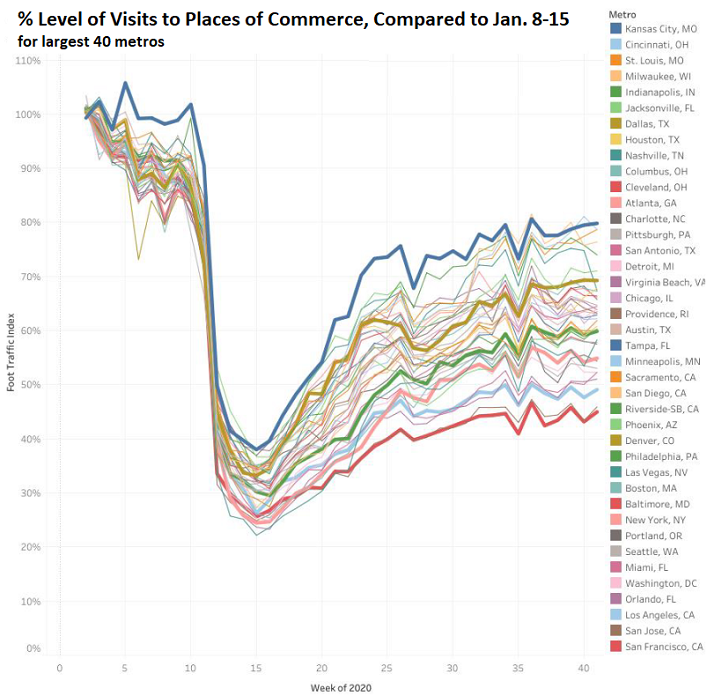
Granted, there has been clear-cut improvement since the earliest stages of the pandemic’s economic impact. Yet the data may be foreshadowing something more ominous; that is, in a “New Normal,” fewer people will go places to spend money.
Many would argue that the online world can pick up the entire economic slack. Indeed, if you look at the insane market capitalization of six corporate behemoths — Facebook, Amazon, Apple, Netflix, Microsoft and Google (FAANMG) — the investment community is already running with the belief.
On the flip side, is FAANMG really worth more than all the companies listed on France’s CAC-40, Germany’s DAX, Italy’s FTSE-MIB, the United Kingdom’s FTSE 100, Russia’s RTS and Poland’s Warsaw Exchange… combined? It is right now.
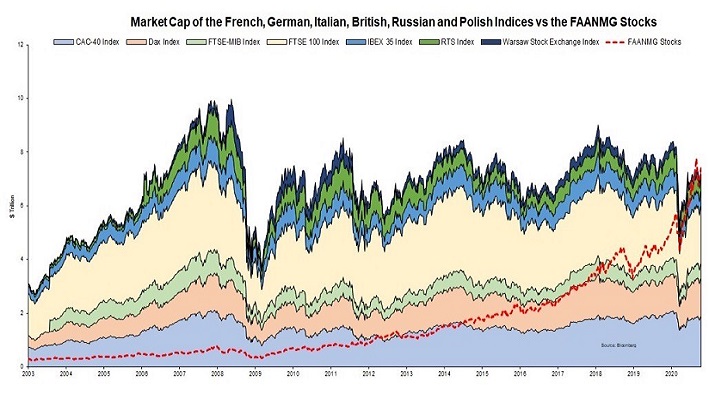
The problem with the current circumstances may not even be the astronomical valuations (e.g.. Forward P/E 60). The issue may rest with the influence that six companies alone have on the primary U.S. benchmark, the S&P 500.
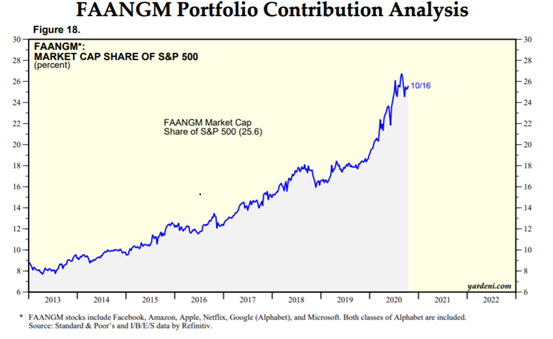
The majority of U.S. dollars flow into index funds. And the overwhelming majority of index fund investing is S&P 500 index investing.
As it stands, then, the stock price movement of six tech monsters determine 25% of the fate of investor fortunes. Should the big boys falter in a meaningful way, investor returns may follow suit.
Wolf Richter’s analysis in the chart below adds perspective. In particular, when you subtract out the influence of the mega-tech names, the overall U.S. market via the Wilshire 5000 has stagnated for nearly two years.
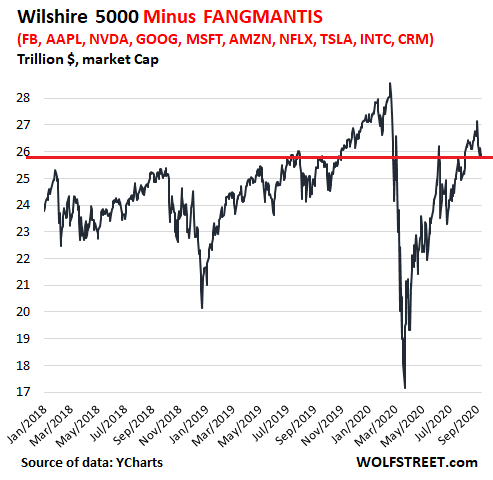
There’s little question that the S&P 500 is severely overvalued. By many measures, including Warren Buffett’s market-cap-to-GDP indicator, the benchmark is more overvalued than at any other time in its history. That’s what FAANMG dependency has brought.
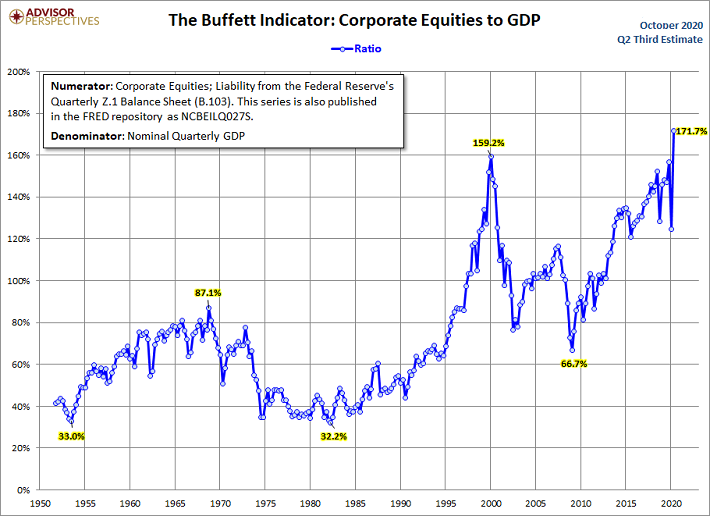
Perhaps the most important item to consider is whether or not Federal Reserve stimulus (e.g., rate manipulation, money printing, asset purchases, etc.) and federal government stimulus (e.g., direct payments to Americans, PPP loans, trillions in deficit spending, etc.) can be powerful enough to prevent a FAANMG stock bubble from bursting. So far, government stimulus has been plenty powerful.
Would you like to receive our weekly newsletter on the stock bubble? Click here.
